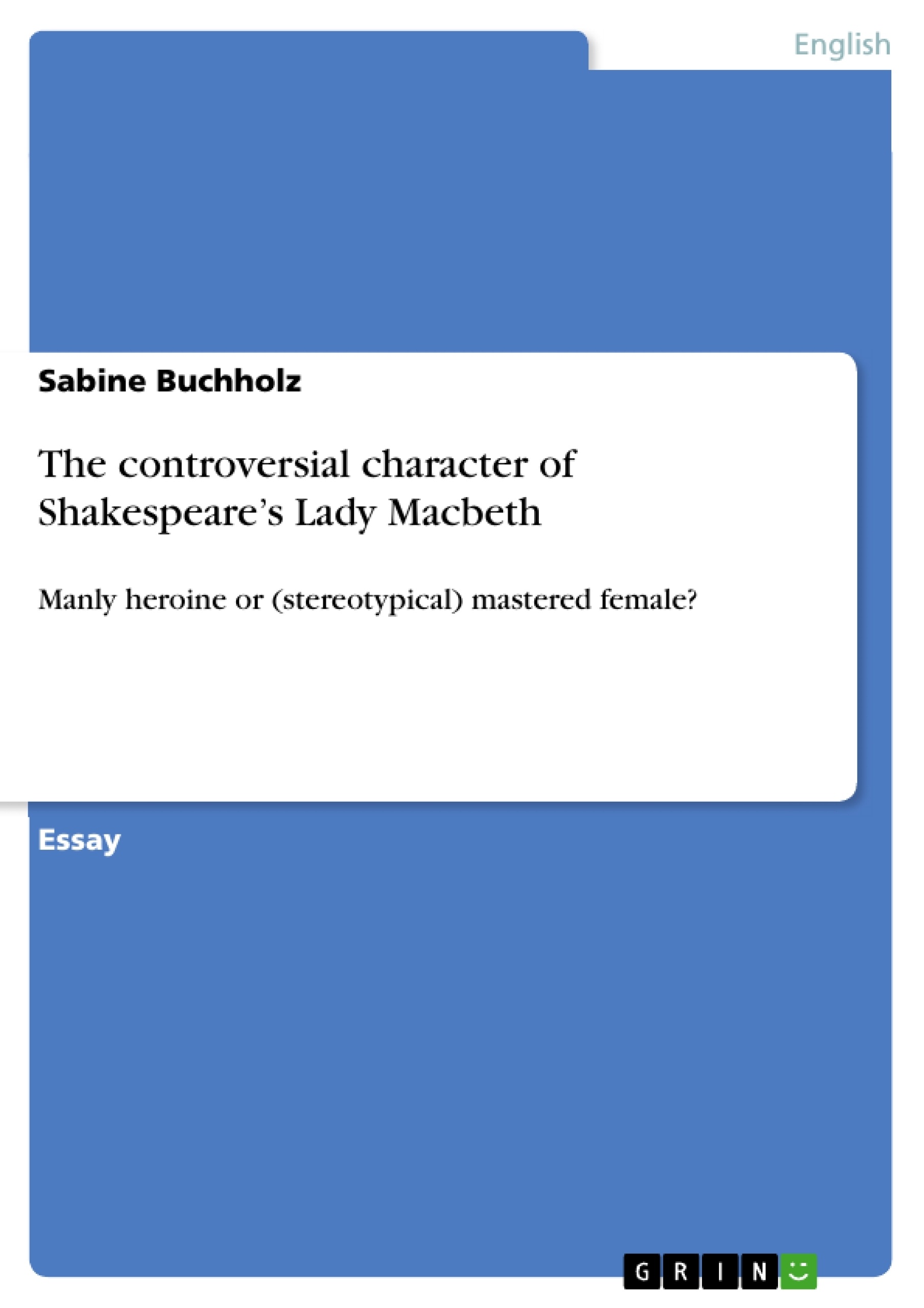In Shakespeare’s tragedy Macbeth (1606), the plot’s fatale process is actuated due to some disastrous factors working hand in hand: Obviously, the witches and their mysterious prophecy play an initializing role, but only the particular disposition of the protagonist and – what is maybe even more important – the character sketch of his wife induce the tapering of the story line. This essay is to concentrate on the latter part of the portentous couple, Lady Macbeth. Its focus of analysis is the matter of femaleness: Up to what extent does the central woman character leave the specific ‘female realm’ of passiveness, debility and subjection? Is she to be considered a revolutionary, emancipated woman? Or do we find more points in her behaviour supporting that all her attempts to step out of the male domination must fail?
Table of Contents
- The controversial character of Shakespeare's Lady Macbeth: Manly Heroine or (stereotypical) Mastered Female?
- Introduction
- Lady Macbeth’s Masculinity
- Lady Macbeth’s Feminity
- Conclusion
Objectives and Key Themes
This essay analyzes Lady Macbeth's character in Shakespeare's tragedy Macbeth, focusing on the question of whether she transcends traditional female roles and achieves a sense of power, or if her actions ultimately reinforce her inherent feminity. It explores Lady Macbeth's behavior, motivations, and language to determine how her character reflects the societal expectations of women in 17th century England.
- The portrayal of female ambition and its limitations in Shakespeare's time.
- The complex interplay between masculinity and femininity in Lady Macbeth's character.
- The use of language and imagery to represent Lady Macbeth's inner struggle and the societal pressures she faces.
- The influence of Lady Macbeth's actions on her husband and the consequences of their ambition.
- The question of whether Lady Macbeth can truly be considered a revolutionary female figure or if her actions reinforce traditional gender roles.
Chapter Summaries
- Introduction: This chapter establishes the context of the essay and introduces the central question of Lady Macbeth's character: does she embody a revolutionary female figure or does she ultimately succumb to societal expectations?
- Lady Macbeth’s Masculinity: This chapter explores aspects of Lady Macbeth's character that can be interpreted as masculine, such as her decisiveness, ambition, and willingness to exert control over her husband. It examines how her behavior challenges traditional gender roles.
- Lady Macbeth’s Feminity: This chapter examines the ways in which Lady Macbeth's actions and motivations reinforce societal expectations of women. It analyzes her dependence on her husband, her emotional vulnerability, and her reliance on manipulation as feminine traits. It also delves into the imagery and symbolism related to her femininity.
Keywords
This essay focuses on the themes of gender roles, ambition, power dynamics, manipulation, femininity, masculinity, societal expectations, and the interplay between individual agency and societal constraints in the context of Shakespeare's Macbeth.
- Citar trabajo
- Sabine Buchholz (Autor), 2006, The controversial character of Shakespeare’s Lady Macbeth, Múnich, GRIN Verlag, https://www.grin.com/document/82634



